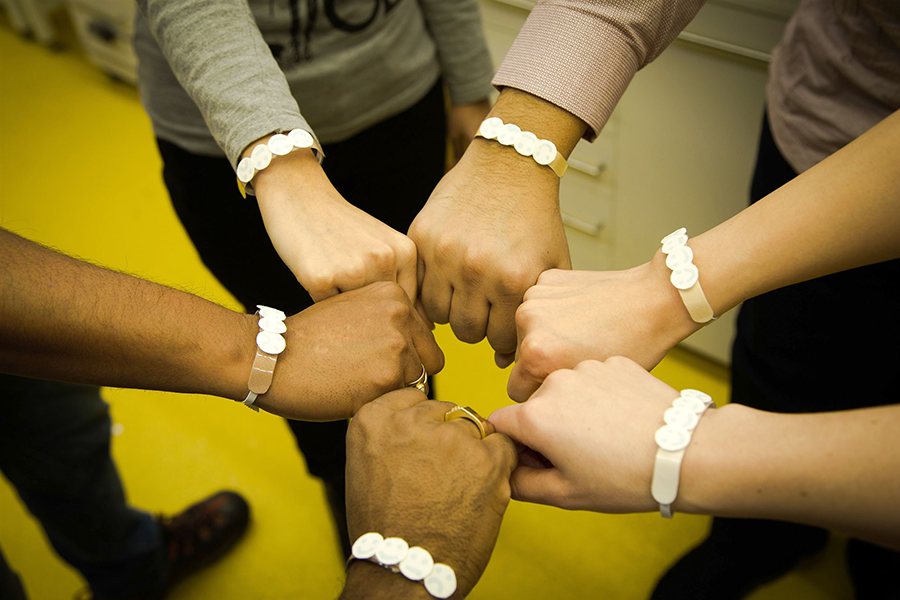Researchers at RMIT University in Australia have invented a simple inklike product that could be used to make wearable sun sensors that tracks the level of dangerous ultraviolet radiation (UVR) exposure, potentially helping to prevent skin cancer.
Related L’Oreal’s Batteryless UV Sense Fits On Your Fingernail
Australia has the highest rate of skin cancer in the world, where two out three people are expected to develop at least one type of skin cancer. UV index is part of daily weather forecast in that country, but the UV index forecast is for all people in general, it doesn’t take into account skin shade, tone and other factors.
According to American Cancer Society, skin cancer is by far the most common type of cancer in the United States. One-in-five Americans will develop skin cancer by age 70.
The authors note that while some people might be advised to spend more time in the sun to get vitamin D, too much sun exposure can be harmful. These sensors, they say, can prevent overexposure to UVR.
The scientists used the ink to write on a paper-based product and created a wearable solar UV sensor prototype. The ink darkens steadily when exposed to ultraviolet rays.
“You can print this on anything — paper, plastic or anything,” Vipul Bansal, an applied chemistry professor at Australia’s RMIT University in Melbourne, told NBC News.
“We can print our ink on any paperlike surface to produce cheap wearable sensors in the form of wristbands, headbands or stickers, for example.”

A compound called polyoxometalate is the basis for the ink. An inklike clear product is created by combining polyoxometalate with other compounds. When exposed to UVR, it turns a steadily darker blue.
When exposed to UVB, the most damaging type of radiation, the ink turns blue faster, and it turns blue more slowly when exposed to UVA, which takes longer to do its damage.
The new prototype paper bracelets created by the team could be worn while exposed to sunlight.
“Currently, the sensor comes as a wearable wristband with four smiley faces. As the wearer is exposed to more and more UV with increasing time in the sun, the smileys start lighting up one after another. Finally, a sad smiley appears when the wearer approaches their maximum-allowed UV dose – this acts as a warning sign to leave the Sun,” explained Vansal in an article he wrote in The Conversation.
“The color produced by our sensor indicates when you have achieved 25%, 50%, 75% and 100% of your daily recommended UV exposure.”
Related Stay Safe in the Sun: Smart Wearables to Monitor UV Radiation
Bansal was driven by personal reasons for this research. He said he has been struggling for many years to manage his vitamin D levels, but it remains low even when he takes supplements, he said.
The team is now working to turn this into a commercial product. Bansal said it costs about 3 cents to make a sensor. “It should be affordable to the vast majority of the population,” he told NBC.
The study was published in the journal Nature Communications.












